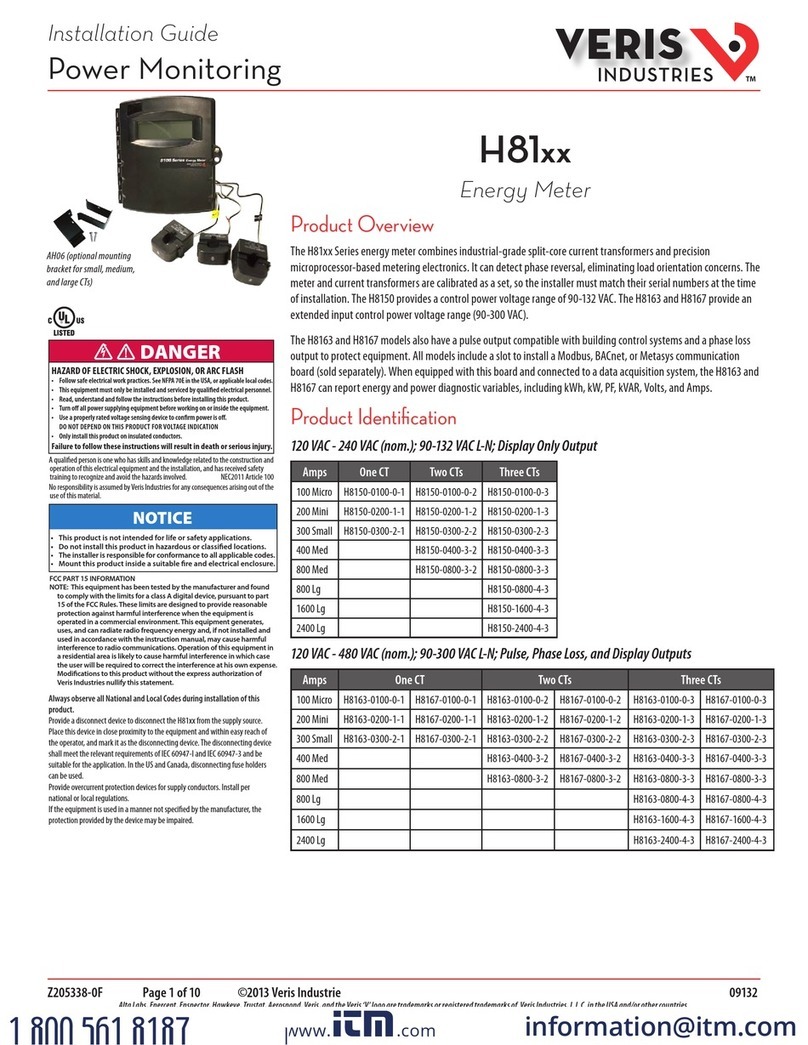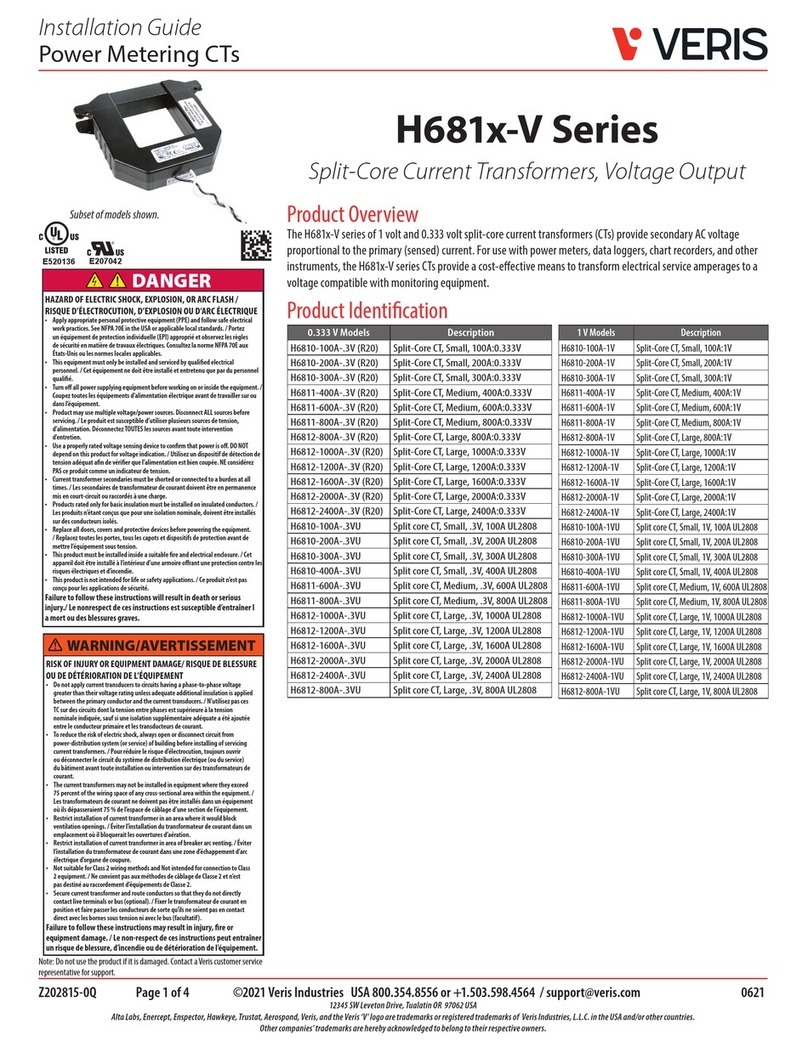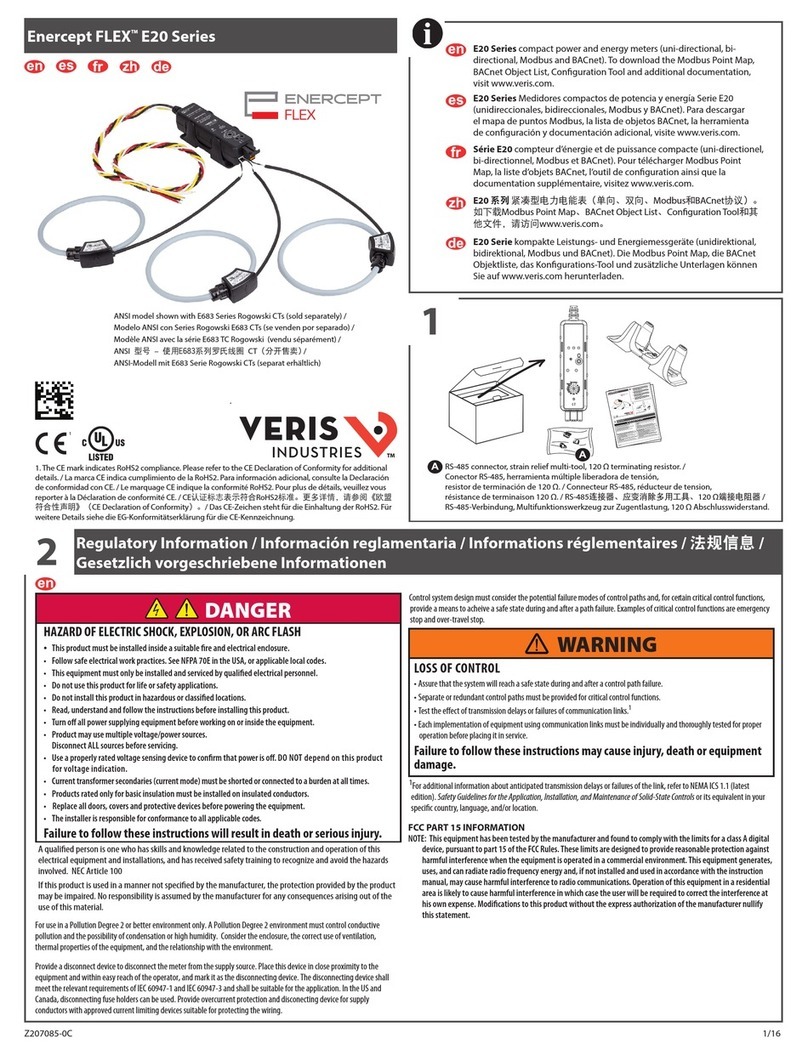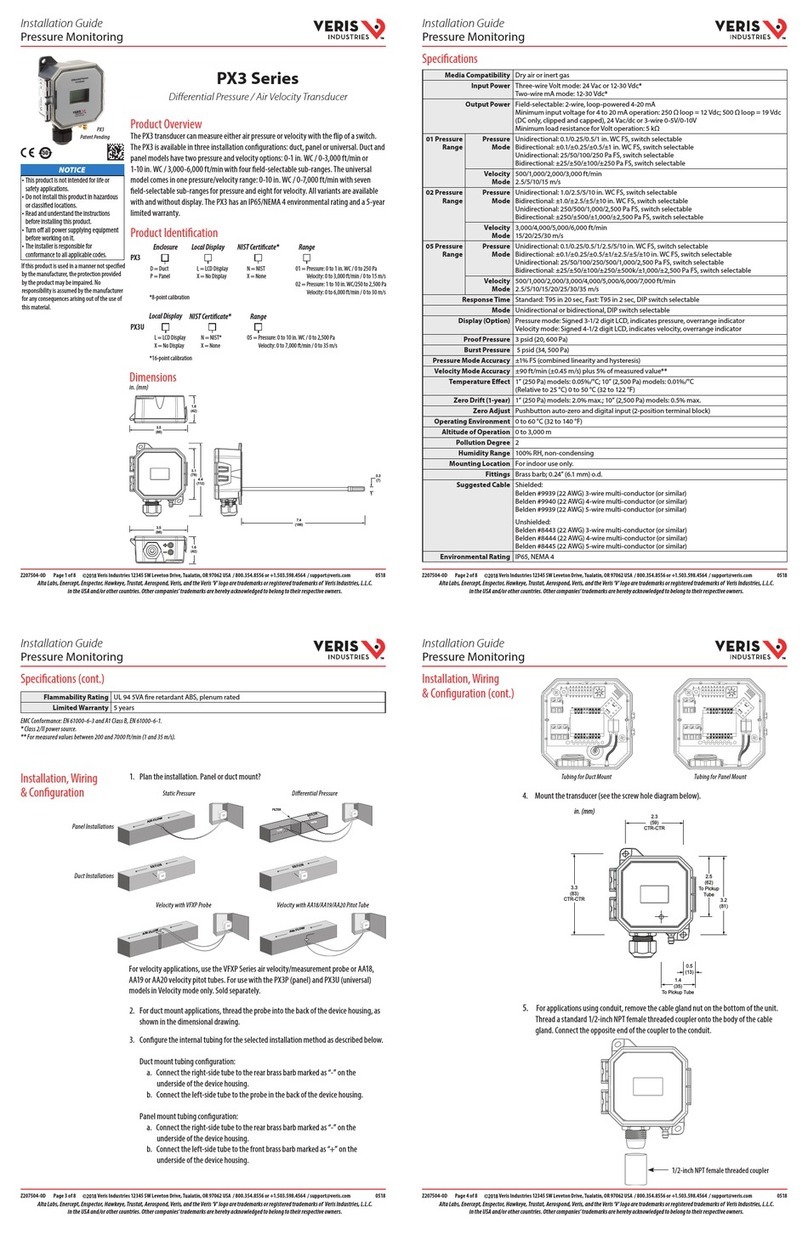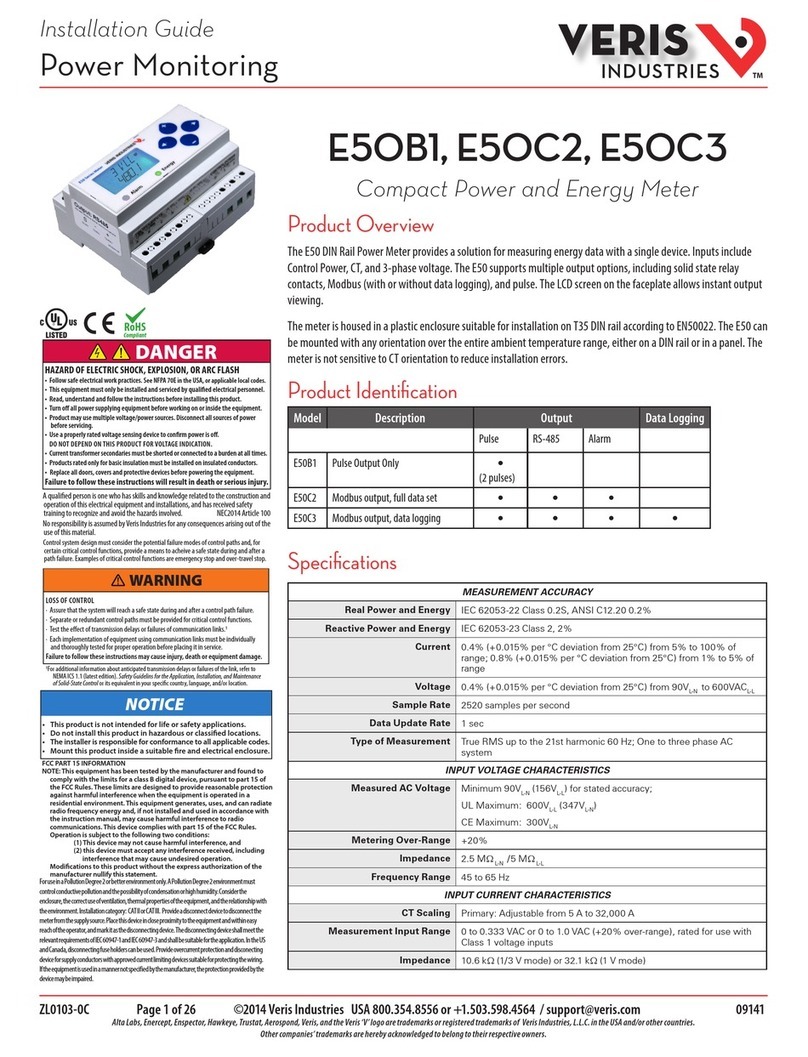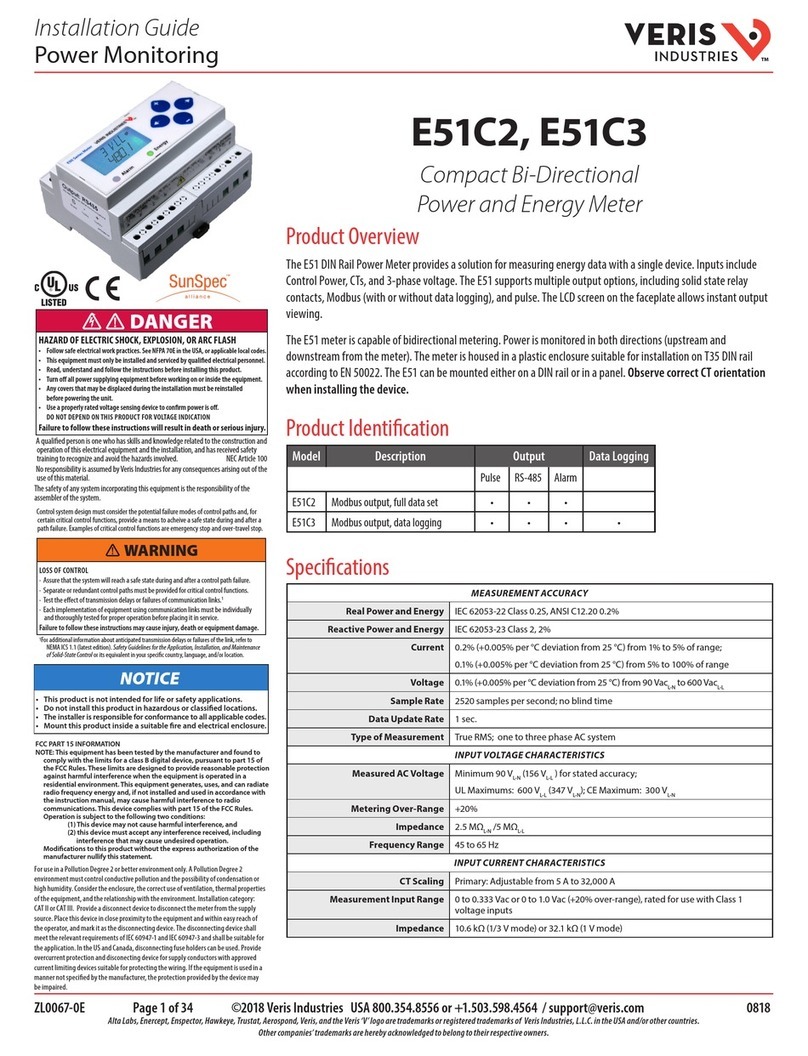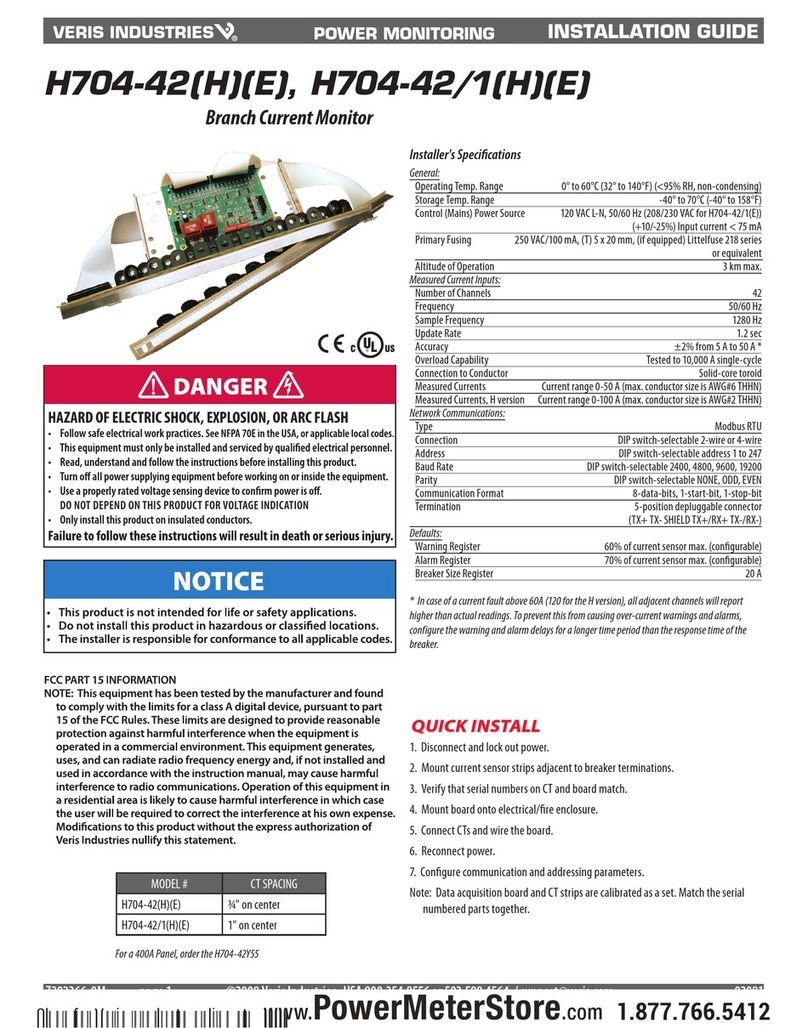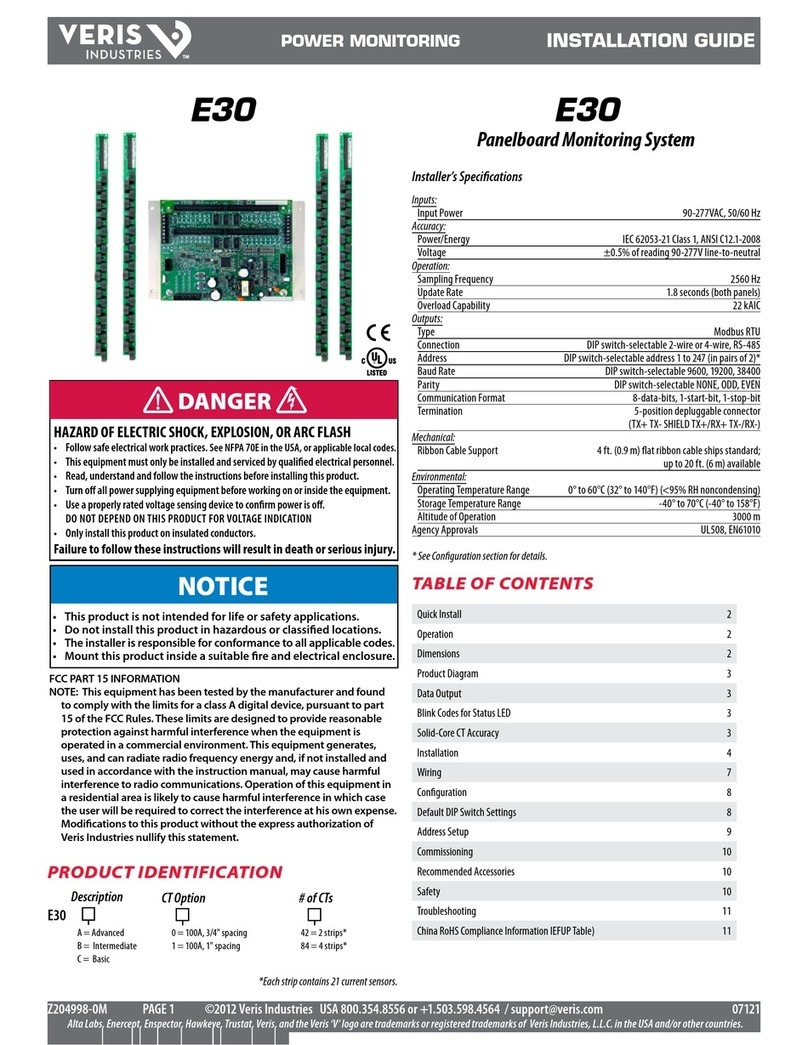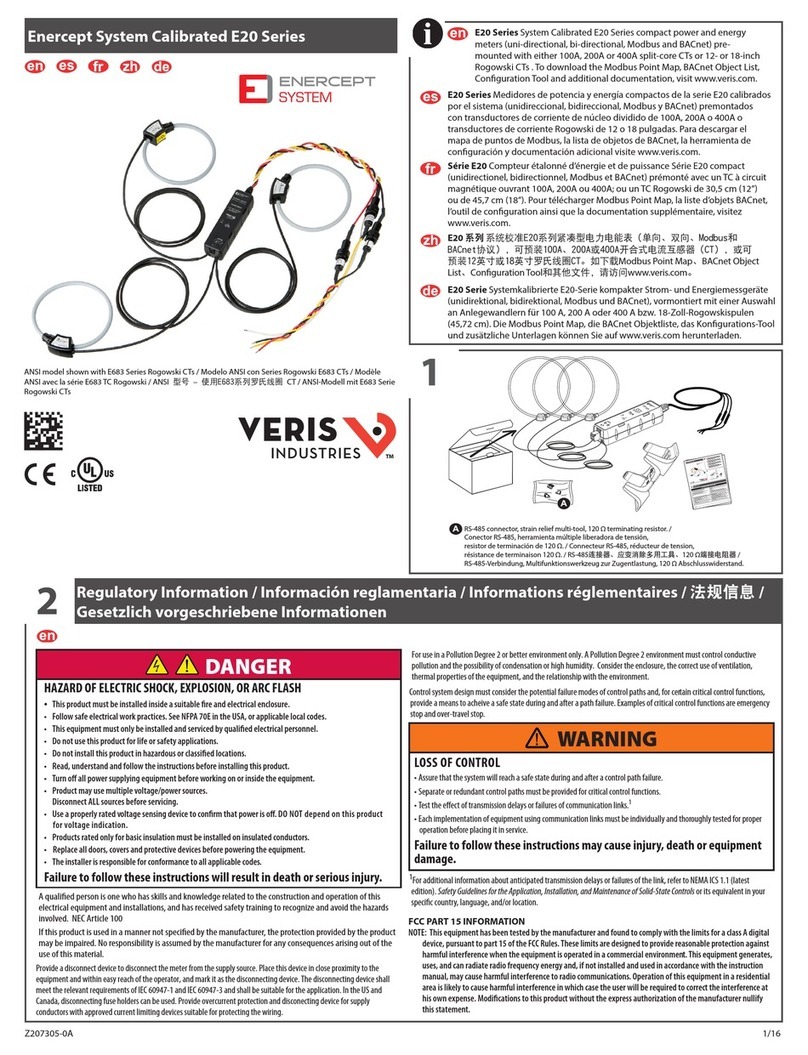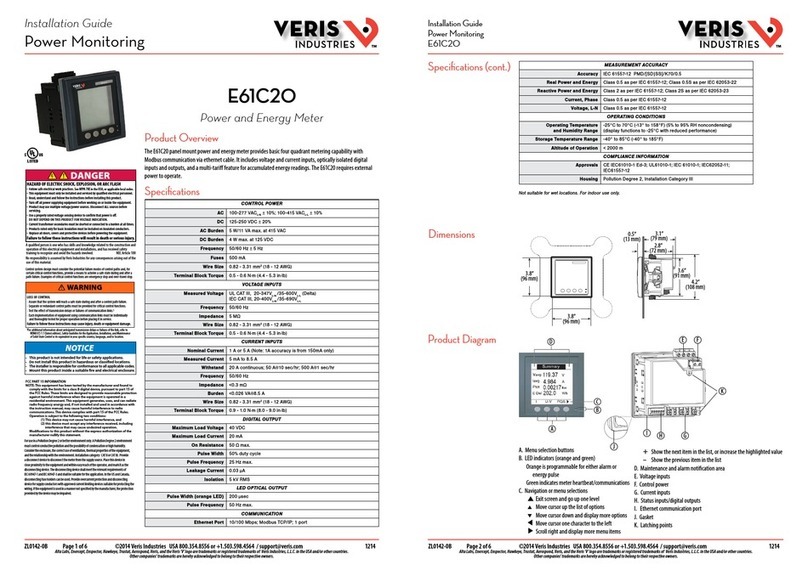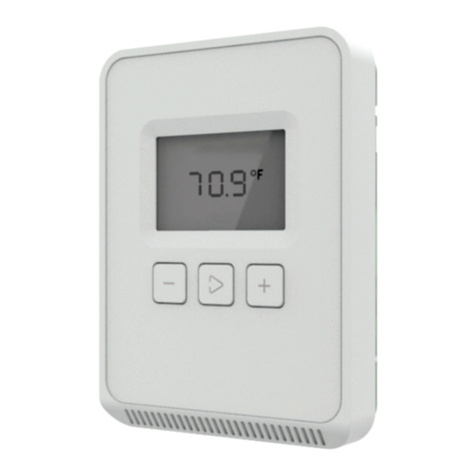
Z204998-0P Page 7 of 49 ©2015 Veris Industries 0815
Alta Labs, Enercept, Enspector, Hawkeye, Trustat, Aerospond, Veris, and the Veris ‘V’ logo are trademarks or registered trademarks of Veris Industries, L.L.C. in the USA and/or other countries.
Other companies’ trademarks are hereby acknowledged to belong to their respective owners.
E30 Series Installation Guide
Data Outputs The E30 provides several types of measurements that give a comprehensive view of power consumption for every load on the
panel (the table below shows which measurements are offered on each model):
• Real-time measurements: A live and up-to-date view of present power levels and the factors that affect them.
• Demand measurements: Averages of values measured over a specified time interval. The time interval (typically 15
minutes) can be set from 10 seconds to more than a day. The demand calculation can be configured to use single
intervals or the sliding average of up to six sub-intervals. Demand measurements are useful for tracking or graphing
load levels over time to correlate with total energy consumption.
• Historic maximum measurements: These measurements store the largest value recorded for a specific measurement
since the last time they were cleared. They are useful for identifying peak levels critical to equipment sizing or demand
limits in utility agreements.
• Accumulated energy measurements: Ongoing totals of cumulative energy used since the last time the value was
cleared. Energy values provide the informational basis for billing, cost allocation, carbon offset, BTU equivalent
calculations, and other applications of overall energy use.
• Energy snapshots: Energy totals that only change when the demand intervals are updated. They are samples of the
free-running energy accumulators at the end of each demand interval, as configured by the user. These provide energy
readings that are easily correlated to the demand values to simplify the tasks of sub-billing and cost allocation.
• Alarms: Provide a warning of excessively high or low current on each branch and aux channel. The user can set two
high-level and two low-level thresholds, and a delay time for latching alarms. Alarms are reported as both non-latched
vents and latched events. Non-latching alarms are active while the current exceeds the threshold, but go inactive if the
current returns to a level within the specific thresholds. Latching alarms become active when the current exceeds the
threshold for a time period greater than the specified delay and remain active until they are cleared remotely.
• Alarm status can be polled via Modbus.
Advanced Features - Some models, especially the E30A support a number of advanced features. Some are always active, and
others are configured manually via Modbus register 62017). For models with 42 channels or more, these features are configured
independently for each panel.
• Logical meter support: The E30 can be configured to map any set of 1, 2 or 3 channels that are adjacent in the panel
to a logical meter, referred to in the point map as a logical circuit, that provides accurate multi-phase measurement
totals. Map these logical circuits by writing the desired logical circuit number into a set of registers/data objects
provided for each branch and aux channel (per panel).
• The channels assigned to each logical circuit must be adjacent in the panel (usually used for multi-phase breakers), but
there are no limitations on where those adjacent channels are aligned in the panel (any position where a multi-phase
breaker can be installed). This functionality is always active, but a user selection affects the how the data can be
accessed via Modbus. Measurement data via Modbus for logical circuits is presented in two ways, arranged either by
logical circuit number (looks more like a collection of individual meters) or by measurement type (arranged similar to
the single-phase data section of the point map).
• Legacy point map or alternate logical circuit point map: The E30 can be configured to select a preferred version of the
Modbus registers in the address range 4000 to 9999. If enabled (default), the logical circuits by measurement type is
active. Otherwise, the legacy point maps for 2-phase and 3-phase breakers used in E3x models with a firmware version
earlier than 1.023 is active. The logical circuits functionality can also be accessed via the “Logical Circuits by Circuit”
section of the point map (address range 10000 to 45000), regardless of the state of this selection.
• Phase angle measurements: The E30 measures the phase angle of every voltage and current input and presents these
measurements (in degrees) in additional data registers/objects. These values are used to verify that current inputs are
assigned to the proper voltage phases and to help determine how power factor variations are influenced by current
phase changes vs. harmonic distortion. Phase angle measurements are instantaneous and always active.
• User CT phase assignment: In the default mode, the E30 assigns each channel to the corresponding phase that most
3-phase panels implement, so that the user does not have worry about it. The user can opt to replace this self-
assignment paradigm with a mode that allows explicit specification of the phase assignment for each channel. The
explicit assignments set by the user are stored by the E30 in non-volatile memory.
• Phase angle reference: The E30 measures the phase angle of every current and voltage input. The user can select
whether the phase angles are stated relative to an absolute reference (the phase angle of voltage input V1) or relative
to the voltage phase assigned to that specific current input channel.
• Demand/snapshot time interval source: The E30 offers two mechanisms for driving the demand/snapshot time
interval, an interval timer or an RTC (real-time clock). The legacy mode (default) uses an interval timer that does not
need to be set to an absolute time. When using the interval timer the demand/snapshot interval can be set from
10 to 32767 seconds (over 9 hours). An alternate mode utilizes an RTC set to a specific date and time to synchronize
the results with a larger system. The RTC must first be set in order to run and capture demand values and energy
snapshots. When power is interrupted, the RTC resets to a default date and time and must be set again in order to run.
When using the RTC, the demand/snapshot interval can be set from 10 to 3600 seconds (1 hour).
Shop for Power Metering products online at: 1.888.610.7664
www.PowerMeterStore.com
